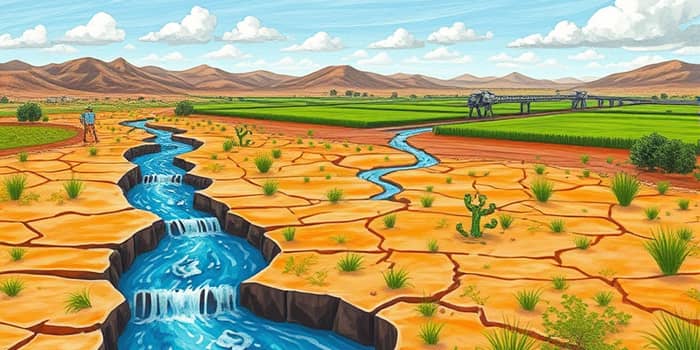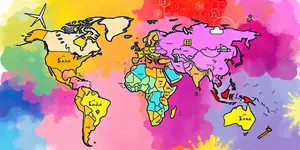
Water, the essence of life, is slipping through our fingers. As demand outpaces supply, billions face an uncertain future. Yet, within this crisis lies an unprecedented investment opportunity—one that promises both humanitarian relief and significant economic returns. By understanding the evidence and embracing innovation, we can avert disaster and shape a sustainable tomorrow.
Across continents, rivers run dry, aquifers dwindle, and communities scramble for every drop. We stand at a pivotal moment where strategic investments in water security can become the cornerstone of global resilience.
Today, 2.4 billion people live in water-stressed regions, withdrawing over a quarter of renewable freshwater to meet basic needs. By 2025, it’s estimated that 1.8 billion people will face absolute water scarcity, with two-thirds of Earth’s population under significant stress. Every year, 2.7 billion individuals encounter shortages at least one month annually, and 1.1 billion still lack reliable access to water.
Beyond human hardship, ecosystems suffer. Over half the world’s wetlands have vanished, eroding nature’s capacity to store and purify water. The loss of these natural buffers exacerbates floods, droughts, and biodiversity decline, creating a vicious cycle of environmental degradation.
The crisis is propelled by multiple forces that intertwine and accelerate one another.
Water scarcity is not merely an environmental issue; it inflicts heavy economic and human costs. Globally, insufficient water and sanitation lead to losses of around $260 billion per year. Healthy freshwater ecosystems, the invisible backbone of our economies, are valued at roughly $58 trillion—equivalent to 60% of global GDP.
Direct benefits, such as consumption and irrigation, account for $7.5 trillion, while ecosystem services—purification, carbon storage, flood protection—contribute nearly $50 trillion annually. Investing in basic water and sanitation yields a remarkable 4x return on every dollar spent, driven by reduced health expenses, higher productivity, and fewer premature deaths.
Behind these numbers are real lives. Unsafe water claims two million lives annually from diarrheal diseases, predominantly affecting children. Food security is at risk as irrigation sources run dry, and forced migration intensifies, fueling social unrest and geopolitical instability.
Addressing water scarcity requires a multi-pronged approach that spans infrastructure, technology, finance, and community engagement.
1. Upgrading Infrastructure and Management
2. Embracing Technology and Innovation
3. Mobilizing Financial Instruments
No single actor can solve this crisis alone. Collective action and robust policies are essential to align incentives and ensure equitable resource distribution.
Governments should adopt integrated water resource management frameworks, prioritize transboundary agreements, and fund local education programs. International bodies must strengthen climate adaptation strategies, support high-risk regions, and foster data sharing to anticipate shortages before they emerge.
Holistic governance and education initiatives can transform community behavior, maximizing the benefits of infrastructure investments. By embedding water stewardship in school curricula and public campaigns, societies can cultivate lifelong conservation habits.
Investing in water security is more than a moral imperative; it is a strategic decision that underpins global stability, economic growth, and environmental health. As companies face rising water-related risks—sometimes amounting to billions in losses—leading firms are integrating water stress into risk models and supply chain strategies.
For impact-driven investors, the water sector offers compelling returns, both financial and social. Every infrastructure project, every technological innovation, and every policy reform moves us closer to a future where water scarcity is a chapter in history, not an existential threat.
Together, we can transform scarcity into abundance. By channeling capital into resilient systems, supporting breakthroughs in desalination and recycling, and fostering international collaboration, we will secure water for generations to come.
Now is the time to act—invest in water, invest in life, and invest in a future where every drop counts.
References













